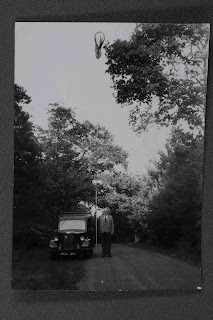Purple Emperor larvae have been disappointingly scarce this autumn. My annual autumn tally in Savernake Forest, Wiltshire, determined by standardised searches, was a meagre 22 - less than half what I'd expected.
It now looks that the July weather was too poor for the laying females, and that the egg lay was consequently low - at least away from the East Hampshire, Surrey and West Sussex region where the butterfly enjoyed an annus mirabilis.
I have yet to find any sign of the insect in my local patch, Cirencester Park Woods, Gloucestershire - in over 50 hours of searching for larvae. This is in part due to the severe outbreak of Melampsora Willow Rust mentioned in my previous post, which has been rampant in the Cirencester / Cotswold Water Park area, but also in part due to poor flight season weather reducing the egg lay in what is a very small population, of recent origin.
Everything now depends on the Dangle Leaf season. Dangle Leaf is a method for finding PE larvae as autumn merges into winter.
In brief, during early to mid- autumn, larvae assiduously silk their feeding leaf stems on to branches, before wandering off to find somewhere to hibernate. The petiole join then breaks, only for the leaves to remain attached for a while by silk, dangling or even spinning madly. These dangles are diagnostic of iris, no other insect does this.
In wet and winter autumns the dangles quickly fall off, especially on larger leaved sallows and along windward edges. Dangle Leaf is therefore about as reliable as Floo Powder in Harry Potter or the Rhythm Method in family planning - but it is quick, picks up larvae just above normal ground-searching level, and can be hugely effective.
This is Dangle Leaf -
Those two leaves are attached by silk strands, the hibernating caterpillar is directly above (though most larvae wander further away, and can be found as far off as 3m from their abandoned feeding station). The 2023 Dangle Leaf season is running a little late, as most sallow bushes have remained green in the absence of frost (this is a very mild, if horribly wet autumn). But it is kicking off now.
Weather permitting, the Dangle Leaf season should last from mid-November to the start of December, possibly beyond.
Give it a go, it's insane...


















